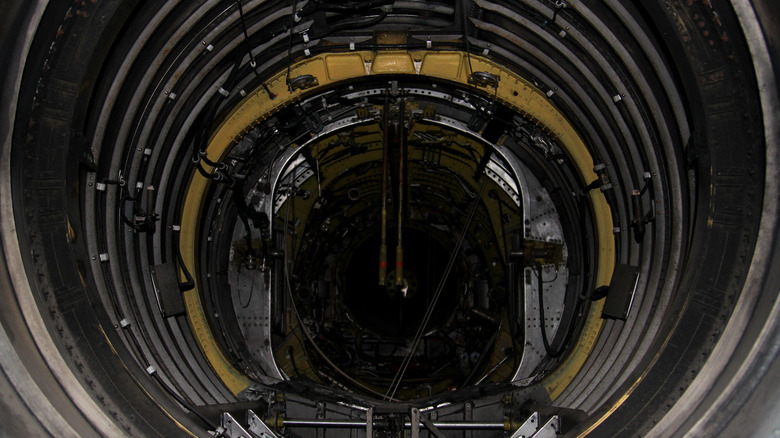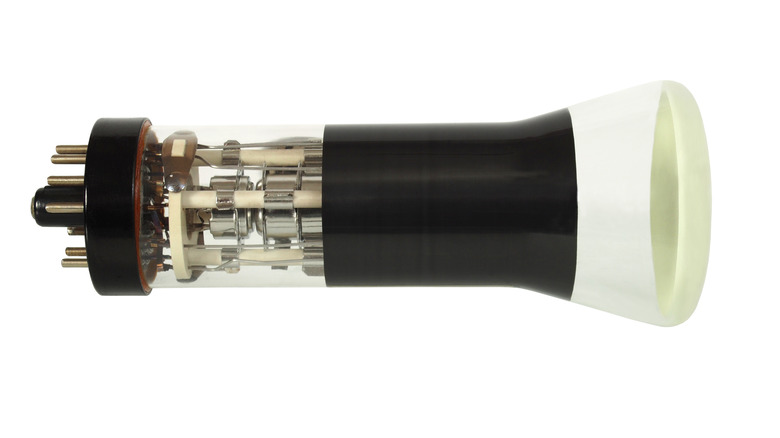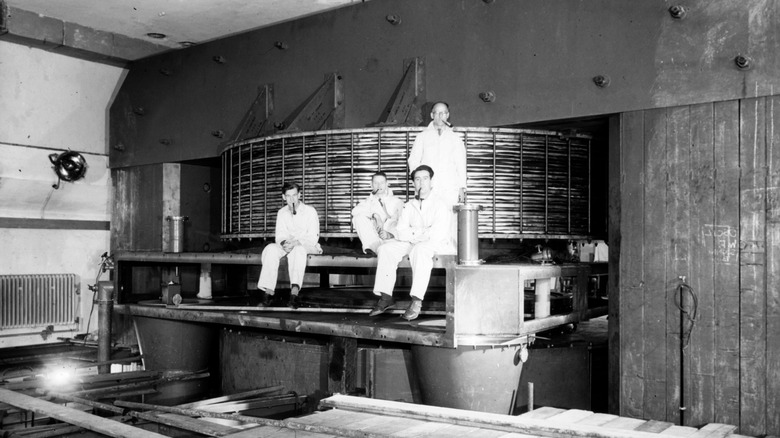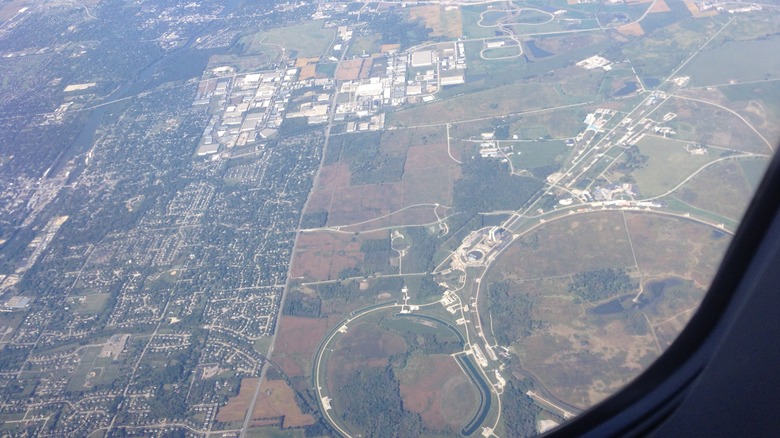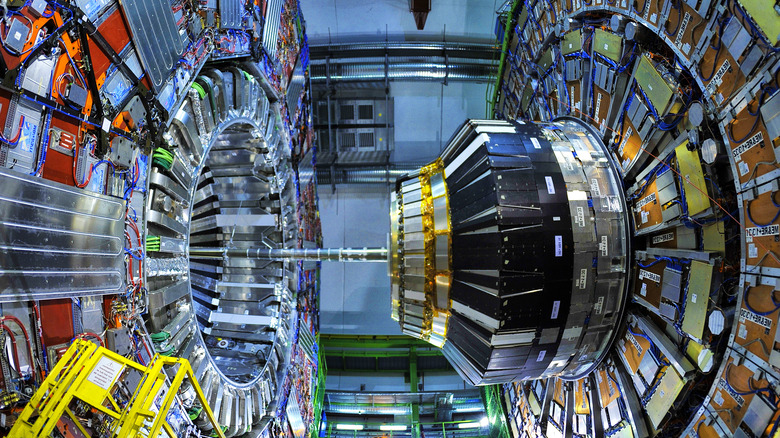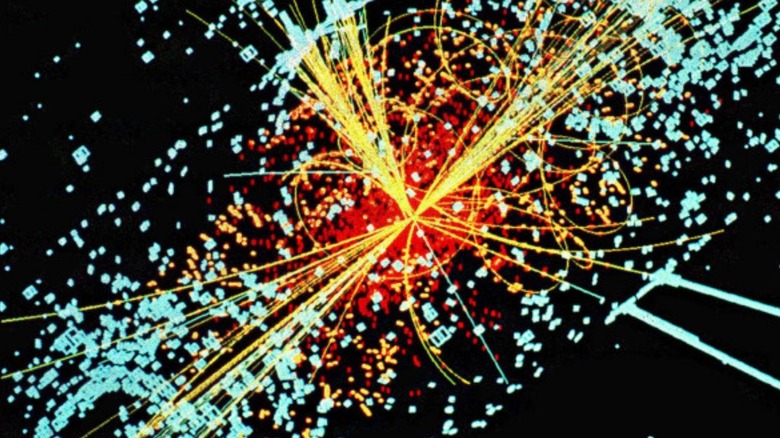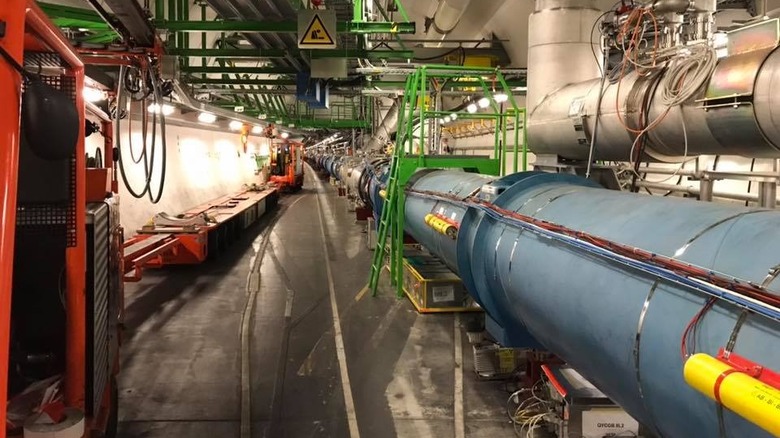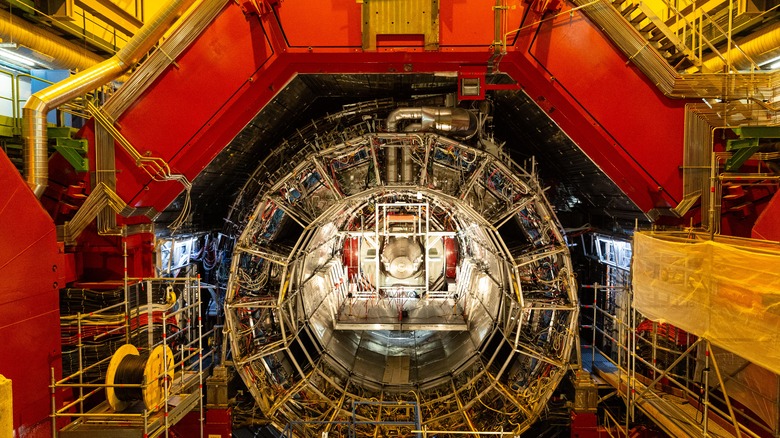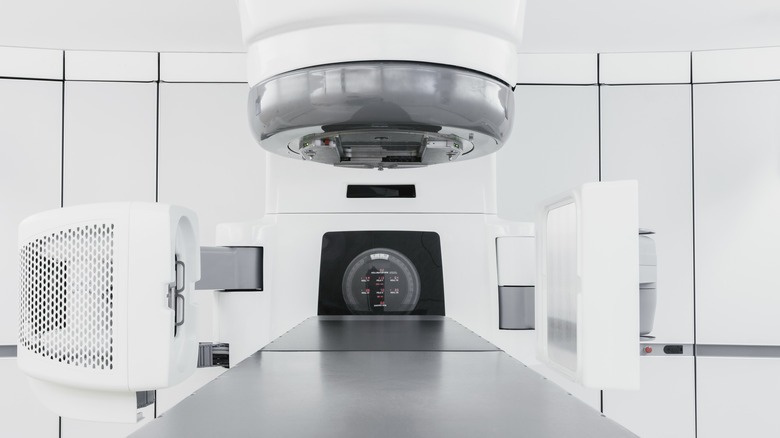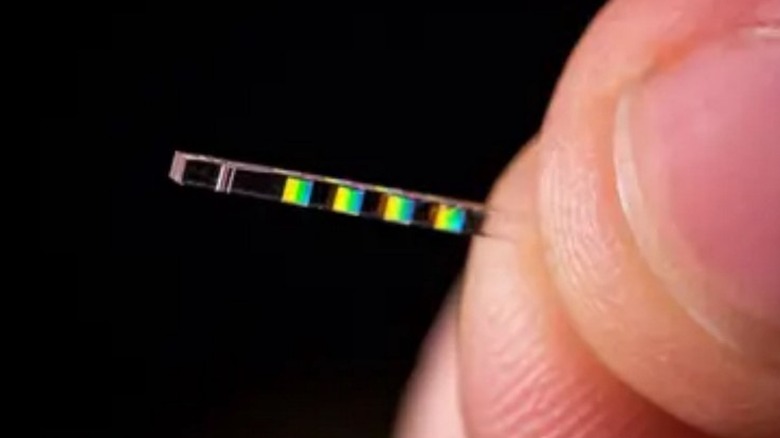How Particle Accelerators Hit The Big Time
Deep beneath the border of France and Switzerland is the most massive, most ambitious experiment ever undertaken by humanity. The Large Hadron Collider (LHC) is a particle accelerator that uses a 17-mile-long ring lined with powerful magnets to speed charged particles to near the speed of light and crash them together at tremendous energies — often high enough to replicate conditions found when the universe was in a hot dense state immediately after the Big Bang.
The LHC represents just one of an estimated over 30,000 particle accelerators in operation today.
Using these machines, researchers have unlocked the fundamental physics that underlies the universe, revealing how physics functions at even the most fundamental levels.
During the 20th Century, particle accelerators became key parts of particle — or high energy — physics and nuclear physics, existing before the two disciplines had even diversified.
What may come as a surprise is that particle accelerators weren't always titanic endeavors that required collaboration between multiple countries.
In fact, some of the earliest predecessors to the LHC were small enough to fit in small chambers located beneath the streets of a war-ravaged Liverpool in the United Kingdom, and earlier, even on a lab bench.
The need for larger particle accelerators was a result of the success of these devices. As they unlocked the physics of one energy level it became necessary to step to the next level, requiring increasingly larger, more powerful, and more costly machines.
That's how particle accelerators hit the big time.
What does a particle accelerator do?
The basic principle informing particle accelerators arises from Einstein's equation E=mc², which tells physicists that matter and energy are interchangeable.
Using this principle, scientists use these machines to accelerate particles to near the speed of light — otherwise known as relativistic speeds – because at such velocities the effects of special relativity manifest.
After accelerating these beams of particles, researchers smash them together, the reason accelerators are also often called particle colliders or "atom smashers," with the collision energy transforming into massive particles that are not seen under normal conditions.
These particles are usually incredibly short-lived, lasting no more than fractions of a second, and can't be directly observed but can be measured by sophisticated detection equipment.
The decay of these particles can reveal a chain of other particles also rarely observed at every day energy-levels. But, this doesn't just reveal the complexities of the sub-atomic world and the occupants of the particle zoo.
Colliding particles at high energies can also reveal the conditions that existed when the universe was billions of billions of billions of degrees hotter and denser than it is today, thus revealing the process by which the cosmos itself evolved.
Different accelerator types and how they work
Current particle accelerators are divided into two primary types: circular accelerators and linear accelerators, sometimes called linacs.
The "pipes" through which particles accelerate are vacuums with a dust-free environment being crucial to ensure beams of particles can travel unimpeded.
Electromagnets are spaced throughout this evacuated pipe, creating electric fields that when switching between positive and negative, create radio waves that give the traveling particles from a particle source an accelerating "kick" and make sure they are placed in "bunches."
While both types of accelerators use powerful electric fields to speed up particles and magnetic fields to steer particles, the primary difference between them is that linear accelerators slam stationary targets with beams of particles, while circular accelerators can also use fixed targets or can slam two beams of moving particles together.
This aspect of circular colliders makes them, in principle, capable of creating higher energy conditions created from the kinetic energy of two beams of particles traveling at near-light speeds.
The early particle accelerator in your living room
Particle accelerators may have a unique place in the history of scientific apparatus due to the fact researchers were using them to make important discoveries before they knew what they were or how they worked.
Perhaps the first, albeit primitive, man-made particle accelerator is the cathode ray tube , something in almost every home in the western world as part of the television.
In 1895, German physicist Wilhelm Röntgen used a cathode ray tube, invented in the late 19th century but relegated to scientific curiosity, to discover X-rays.
The discovery would scoop Röntgen the very first Nobel Prize in Physics in 1901, but the honor of discovering what was happening with the cathode ray tube he used would go to Joseph John Thompson.
In 1897, Thompson, a physicist from Manchester, UK, discovered the electron, originally naming them corpuscles, in an attempt to solve the mystery of cathode rays. Thomspon found that cathode rays were actually small negatively charged particles being accelerated through the tube by electromagnets. In a TV or monitor that uses a cathode ray tube, those electrons are smashed into phosphor molecules, creating a lighted spot on the screen.
Further research would reveal electrons to be part of the atom, with Thompson initially suggesting a "plum-pudding model" with electrons scattered randomly through the atom-like negatively-charged fruit in the positively-charged pudding.
This model would be succeeded by models of the atom that see a particle with an equal but positive charge and a much greater mass at the center of an atom — the proton. Later models proposed the electron buzzing around the proton and its fellow nucleus-dweller, the neutral particle the neutron, discovered later at set energy levels.
The existence of these charged particles opened up the possibility of intentionally accelerating them to relativistic speeds using electromagnets.
This principle was put into with early electrostatic accelerators leading to perhaps the most famous example of such technology, the Van de Graaff generator.
The early accelerators
The first linear particle accelerator was devised in 1924 by Swedish accelerator physicist Gustaf Ising and would be built by Norwegian engineer Rolf Wideröe in 1928.
Upon completion, the machine was capable of accelerating potassium ions to an energy of 50,000 electronvolts (eV) or 50 kiloelectronvolts (KeV). These ions — atoms stripped of electrons — are heavy in comparison to electrons and protons, and it would take the advent of powerful radio-frequency (RF) oscillators during World War II to begin accelerating these smaller particles.
Circular accelerators were also being operated at the same time, but their efficiency was hampered by the fact that unlike linear accelerators the measurement equipment for early cyclotrons and synchrocyclotrons had to be placed in the tube with the particle beam. That's because the beam couldn't just be "shot out" of the end of the accelerator as with linear accelerators.
The first breakthrough in this respect occurred deep beneath the streets of the war-ravaged city of Liverpool in the northwest of England, now marked by the city's Roman Catholic cathedral.
Here, in 1954 and with a machine pioneered by James Chadwick called the 156-inch synchrocyclotron, researchers extracted a beam of particles at high energies from a circular accelerator for the first time. This opened up the applications of circular accelerators greatly and meant beams of particles could be directed to detection equipment.
In 1957, CERN fired up its first accelerator, the 600-MeV Synchrocyclotron. The aim of one of the first experiments was to detect a short-lived particle called the "pion" which should decay into an electron and a neutrino. The CERN machine did this in 1958 just hours after the experiment began, firmly putting the facility on the map.
CERN would supersede the 600-MeV Synchrocyclotron in 1959 with the Proton Synchrotron — which for a time was the most powerful particle accelerator in the world.
The machine has a circumference of 628 meters throughout which 277 conventional electromagnets accelerate particles to energies of up to 26 gigaelectronvolts (GeV) to this day, or 26 million KeV.
What was the Tevatron and what did it discover?
In 1983 the Tevatron at Fermilab near Chicago made history when it accelerated protons to an energy of 512 GeV. The machine made use of an older circular accelerator at the site to speed up particles, usually beams of protons and anti-protons, and then inject them into the main ring of the Tevatron, which had a circumference of 3.9 miles
The most powerful accelerator in the world for many years and the most powerful accelerator ever in the U.S., the Tevatron was capable of creating collisions with an energy of 1.8 trillion electron volts or 1.8 teraelectronvolts (TeV). That is equivalent to 1800 GeV making it capable of generating energy levels also 70 times greater than those at CERN's Proton Synchrotron.
The power of the Tevatron would result in physicists quickly beginning to populate the particle zoo on the way to building the standard model of particle physics.
One of the most important breakthroughs made at the Tevatron was the discovery of the top quark in 1.8-TeV proton-antiproton collisions in 1995.
In 2010, using the Tevatron researchers would watch the decay of another particle — the B-meson – finding a preference to decay into muons, rather than anti-muons. This bias towards particles over their anti-particles may explain why the universe is filled with matter rather than anti-matter.
Despite this success in probing fundamental physics, the Tevatron would be shut down in 2011, after being superseded by a far more powerful machine.
The Large Hadron Collider: The most powerful particle accelerator ever built
The Proton Synchrotron may have been overshadowed, but CERN wouldn't stay in the shadows for long. In 1998, after years of planning, construction of the Large Hadron Collider (LHC) would begin 575 feet beneath the border of France and Switzerland.
The first particles would be accelerated through the LHC, occupying the 17-mile long tunnel that previously hosted CERN's Large Electron-Positron Collider (LEP), in September 2008. After an electrical fault caused an over year-long shutdown of the LHC it was back operating in November 2009.
By 2013 the LHC was capable of accelerating protons to one-millionth of a percent of the speed of light and smashing them together to generate energies as great as 13 TeV, seven times greater than the energies created at the Tevatron. At the points of collision are powerful detectors that pick up the cascades of particles created thus recreating the conditions generated when the particles smash together.
The LHC detectors include ATLAS and CMS, the largest detectors designed to investigate a wide range of physical phenomena, and the specialized detectors ALICE and LHCb as well as some smaller devices like TOTEM and LHCf.
The main aim of the LHC was to build on the results of other particle accelerators by completing the standard model of particle physics by detecting an elusive occupant of the particle zoo — the Higgs boson.
Discovering the Higgs Boson and completing the standard model
In 2012, CERN announced that the detectors ATLAS and CMS had independently detected the presence of a particle with a mass in the region of around 125 GeV, a good match for the Higgs boson particle.
The Higgs particle was proposed in the 1960s by Robert Brout, François Englert, Peter Higgs, Gerald Guralnik, Carl Hagen, and Tom Kibble as arising from a field that via what is known as the Brout-Englert-Higgs (BEH) mechanism gives other sub-atomic particles their mass.
This mass-granting particle, unique in the particle zoo due to its having zero spin, no electric charge, and no strong force interaction, was the final element of the standard model of particle physics to be discovered, thus completing the best description of the particles and forces of the sub-atomic world.
Yet, the LHC went beyond the mere discovery of the Higgs boson, investigating how the particle interacts with other bosons — force-carrying particles — and fermions, particles that make up matter. Thus, researchers confirmed the prediction made by the standard model that the stronger a particle interacts with the Higgs fields the more massive it is.
This may have the ring of finality about it, but there are things such as dark matter, dark energy, and other aspects of physics that lie beyond this model, including possible alternate versions of the Higgs boson itself.
To probe physics beyond the standard model the LHC needed a significant upgrade, currently underway at CERN.
The High Luminosity Upgrade at the Large Hadron Collider
On April 22 two beams of protons were circulated in opposite directions around the LHCs cycle at their injection energy of 450 GeV, marking the restart of the accelerator and a new era of physics. The beam is relatively tame for the LHC, which can hit energies as great as 13 TeV, but it is what it signifies that matters, the beginning of "Run 3" of the collider after a three-year shutdown for upgrades.
During Run 3 researchers at the LHC expect collision energies to reach as high as 13.6 TeV, but this is just the tip of the upgrade iceberg. The recent halt in operations is just a single step on the journey to what is called the High-Luminosity upgrade.
In 2029, the collider will come online again after another three-year shutdown, but it will then be known as the High Luminosity LHC (HL-LHC).
In terms of an accelerator "luminosity" refers to the number of collisions it is capable of generating. More collisions mean more data, and more data means an improved chance of spotting exotic physics. The HL-LHC will maximize the luminosity of the LHC by a factor of 10.
To put this into perspective, in 2017, the LHC collided enough particles to create approximately three million Higgs bosons. From 2029, it is estimated that the HL-LHC will collide enough particles to create 15 million Higgs bosons per year.
The Large Hadron Collider gets heavy with ALICE
An experiment set to benefit from the High Luminosity upgrade is ALICE, short for A Large Ion Collider Experiment, consisting of the 10,000-ton, 26 m long, 16 m high, and 16 m wide ALICE detector.
Unlike experiments at the LHC that slam together protons, ALICE goes bigger — smashing heavy ions like those of iron into each other.
When ions of iron slam together at relativistic speeds protons and neutrons "melt" — thus freeing the quarks from their bonds with the gluons. Quarks are not seen in isolation in ordinary conditions, always being tied up in particles like protons and neutrons.
The purpose of allowing quarks to wander free through the LHC is to create a state of matter called quark-gluon plasma. What makes this so fascinating is that it filled the Universe in its infancy when it was much hotter and denser than it is today.
This means that studying this exotic state of matter is an ideal way to study conditions in the early Universe shortly after the Big Bang. But, in addition to this, watching how quark-gluon plasma cools gives an indication of how it gave rise to the particles in the universe and of how the first atoms evolved.
While CERN expects the ATLAS and CMS experiments to achieve more collisions during Run 3 than in the other two periods of operation combined, during this period ALICE will measure up to 50 times as many heavy-ion collisions as before.
Particle accelerators in medicine and industry
Particle accelerators have clearly come a long way since their inception, but these machines have also moved from the labs, crypts, and underground tunnels and crucially from the hands of particle and nuclear physicists alone.
Accelerators are now used in a wide range of industries, with the medical field, in particular, finding accelerators particularly useful. According to the U.S. Department of Energy (D0E) tens of millions of patients receive accelerator-based diagnoses and therapy each year in hospitals and clinics around the world.
The use of particle accelerators in medicine falls into two distinct categories, the first of which is the production of radioisotopes emitting X-rays, gamma rays, or positrons — positively charged electrons — for medical diagnosis and therapy.
The second major usage of accelerators in medicine is as the source of beams of electrons, protons, and heavier charged particles for treatment, with microwave linear accelerators providing a highly effective method for treating cancer patients.
Accelerators that produce beams of electrons can also be used in medical sterilization while those that accelerate heavier particles have found applications in the creation of artificial joints.
The DoE also adds that currently hundreds of industrial processes rely on particle accelerators, from applications as mundane as the production of plastic for shrink wrap and the manufacture of computer chips.
The future of particle accelerators
In 2040, the HL-LHC is set to cease operations, and plans are already underway to supersede this accelerator. CERN's Future Circular Collider (FCC) study aims to suggest designs and infrastructure for the next generation of particle accelerators.
This will push the energy and intensity of future colliders with CERN aiming to create a machine that reaches 100 TeV. And ironically, particle accelerators may be about to come full circle.
Increasingly researchers are returning to the use of bench-top particle accelerators. Work has even begun on particle accelerators that can fit on a single computer chip.
One concept being developed at SLAC involves carving a nanoscale channel in silicon, sealing it in a vacuum, and then sending electrons through this cavity. These electrons are accelerated by pulses of infrared light through the silicon.
Currently just a prototype, the team at SLAC that developed this on-chip integrated laser-driven particle accelerator hope that in the future technology like this will make small-scale particle accelerators available to researchers across the globe who don't have access to larger machines.
